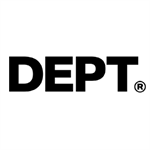When asked about the future of creativity, like a muscle memory response to a brief, I present two routes to choose from.
Route 01: Where I say it’s all about AI, the metaverse, the creator economy, idea decentralisation, and the like.
Route 02: Where I say it’s all about going back to owning a big idea, mass media, craft, and storytelling.
You’ve probably already picked the route you like.
Everyone in the industry has a view on the status quo and the direction we are heading in, with creatives generally having the strongest and most negative opinions on which route they foresee.
Whether it’s the death of creativity, craft, and copywriting or the race to the bottom with short-term performance over long-term brand building or the AI fox being invited into the creative chicken house, or the rise of creators and their stranglehold on content and community.
Obviously, I can’t be a creative. Because none of this bothers me.
Why? Because we’ve been here before.
Rewind the last 20 or so years - the websites, emails, and banners of the digital infancy; flash microsites; virals; apps; organic social; paid social.
This stuff was cutting edge at the time, but only to the people that either actually cared or knew they needed to care. The outsiders. Everyone else looked away because it wasn’t “real creative”.
Doing cool, innovative things in these unloved spaces was where the fun actually happened. It was a different type of craft: hacking platforms, resourcefulness, and curiosity.
It was where you learned that you and your work needed to constantly stay relevant and to stand out. No laurels were rested on. No dining out on a TV ad you made with an A-list actor, or anyone you knew actually seeing your work. Let alone winning awards or having budgets for flashy shoots, or a path to a job as a creative in a “real” agency.
Get pioneering
It always felt exciting rather than comfortable but creativity shouldn’t be about comfortable. It’s about being driven to reinvent ourselves and what we do so we can create things in new ways with new tools in new places. The very definition of pioneering.
At Dept, this is the core of what we do, bringing marketing and technology together in new, interesting ways.
From AI to creators, from content to Discord communities and automation, we are always looking to find a fresh approach to them all - making our creative stand apart from that of other agencies that prioritise either marketing or technology over the other.
This week, we launched our own agency campaign, “Prepare to Pioneer”. It perfectly encompasses this ethos at a time of constant change when brands need resourcefulness and innovation more than ever if they are to stay ahead. At the heart of it is an AI-fuelled wayfinder that enables users to discover their unique pioneering profile. We want to rally like-minded clients to join us and explore what’s possible together.
So it sounds like I'm pushing you all into route 01.
But let’s look at the merits of route 02…
While all this newness is a good guarantee of cut-through and head-turning in our little industry bubble, audiences aren’t as easily impressed. We need something more than just the novel and the hype.
Some of the best work I’ve seen in recent years still has that pioneering energy I spoke of earlier. Take, for example, how Back Market used Apple’s AirDrop against them. Or how AR was used to subvert the British Museum’s artefact history by Vice. Or a shameless plug of the Webby-winning work we did for Amazon Prime, which saw Twitch streamers taking part in a live, IRL gaming experience.
These all required effort, A.K.A. craft, and lots of it. As well as making sure they were entertaining and most importantly, memorable.
The recent Hilton example of a 10 minute TikTok ad is another case in point. Yes, 10 minutes was novel, and using creators and TikTok instead of actors and TV was relevant, but the fact it was entertaining for 10 minutes was the reason it was good.
When it comes to Chat-GPT, Midjourney, et al, their increasingly impressive visual outputs are only as good as the prompts we give them. The specificity, creativity, and crafting of getting the input just right is the de facto dictator of great output. Prompt poetry, if you will.
This really isn’t a million miles away from the scripts that creative teams have crafted over the years to hand to the director they’ve entrusted to bring their vision to life.
Where more is required of a bigger marketing budget and audience engagement, the metaverse, and Web3 in general, have to work harder.
Technique and tech
As we hover between the peak of inflated expectations and the slope of enlightenment on the hype cycle, metaverse ideas in particular need to be a little more bettaverse (sorry) and create a true value exchange for audiences to earn their scarce time.
While the days of big TV campaigns are over, it’s still the case that creativity needs an audience. Careful planning of media and distribution is key. In fact, the craft needed to get the ideas out is even more important, nuanced, and interesting than ever.
In short, all the craft and technology in the world can’t save a bad idea. But it can make it.
So, embrace innovation, be curious, try new things, lean in, and feel the excitement of being uncomfortable. Newness or novelty isn't enough; we still need craft and great ideas.
Together, this powerful combination will be what constantly rewrites the expectations of what creativity and creatives in advertising can be.
So yeah, it’s route three for me.
The client’s favourite ask: “Can we combine routes one and two please?”


